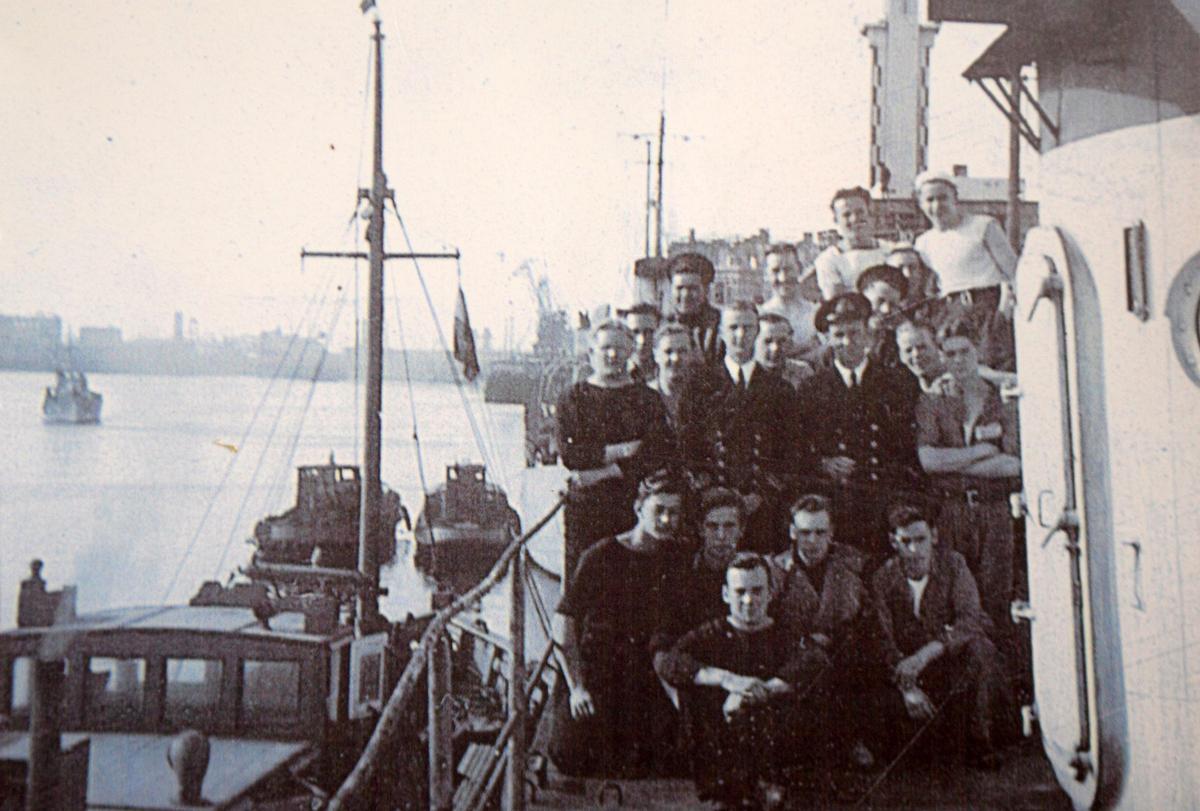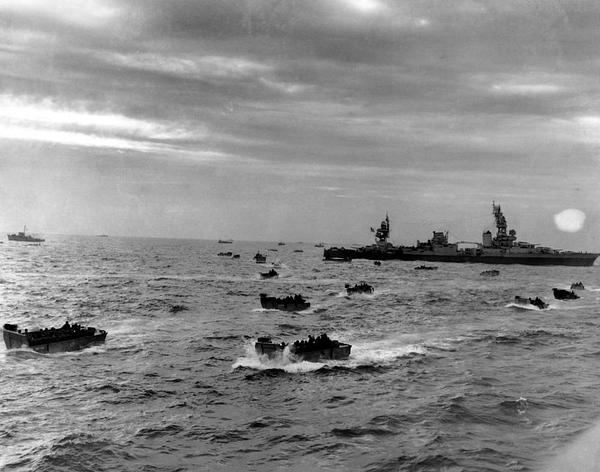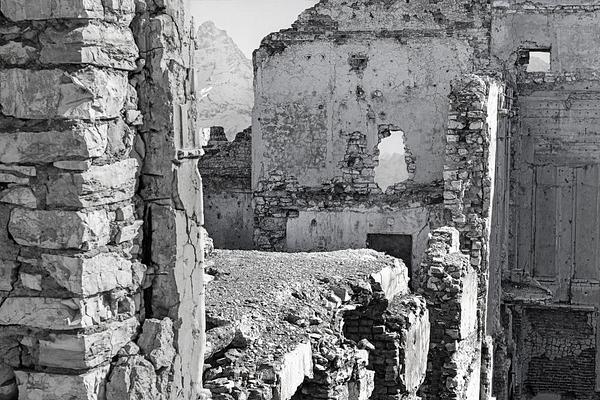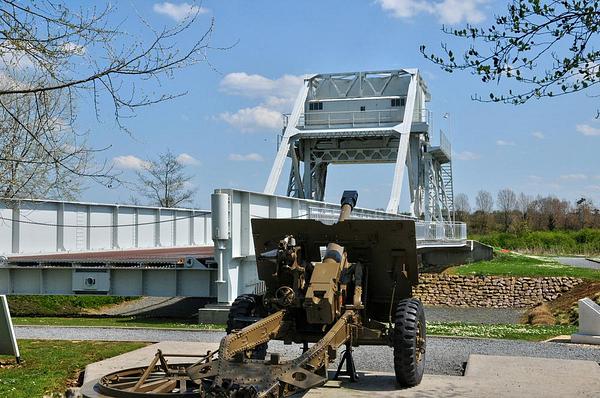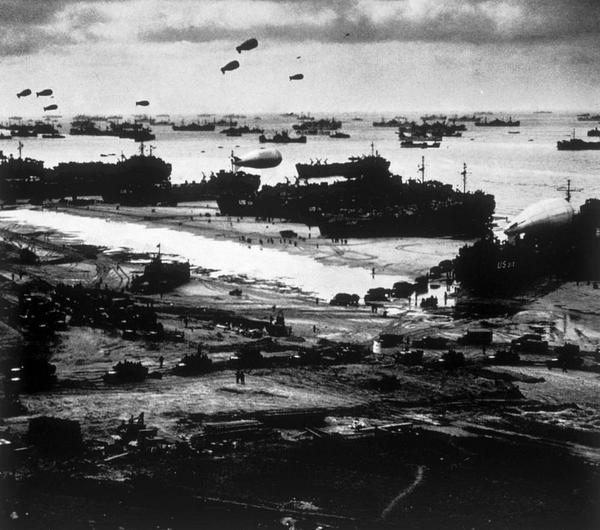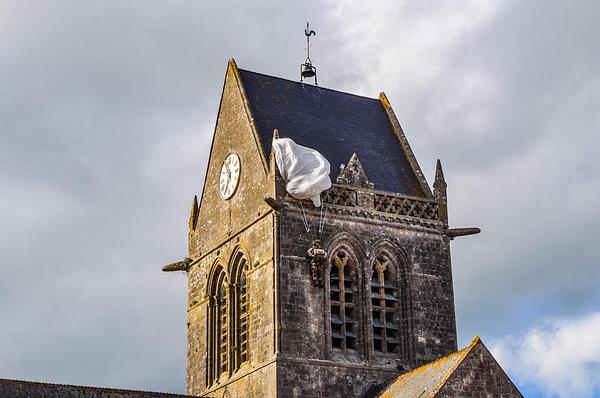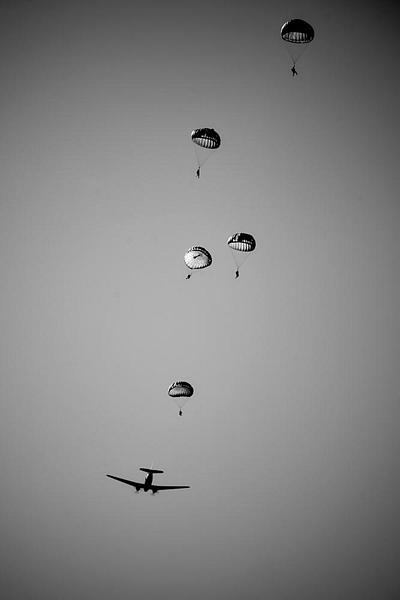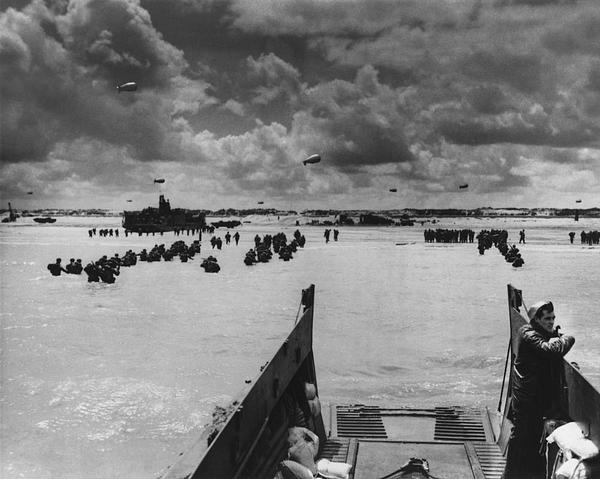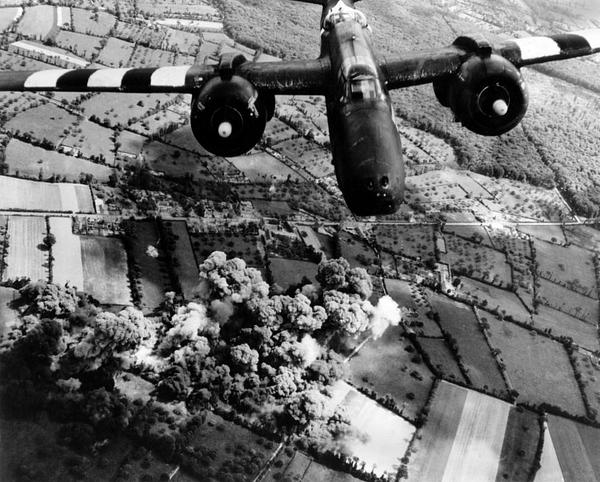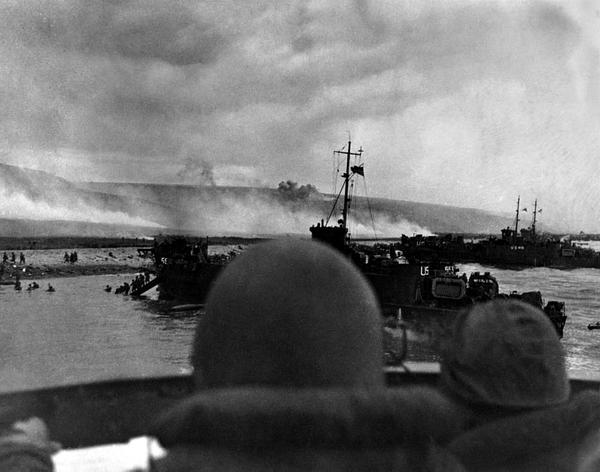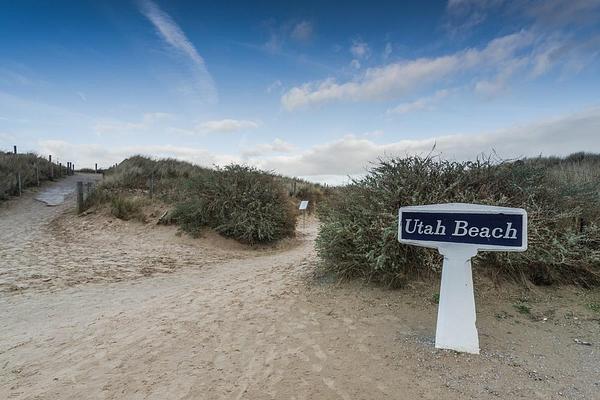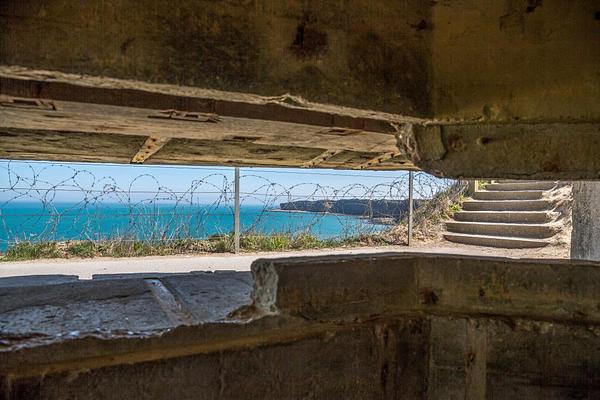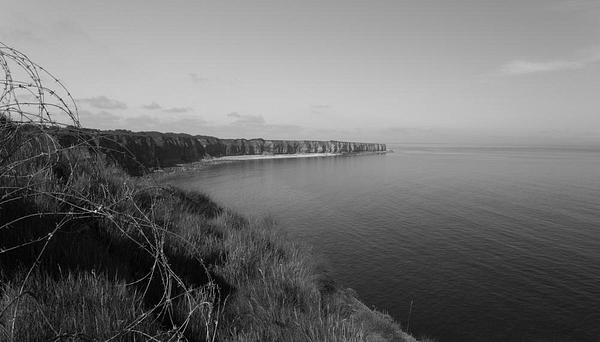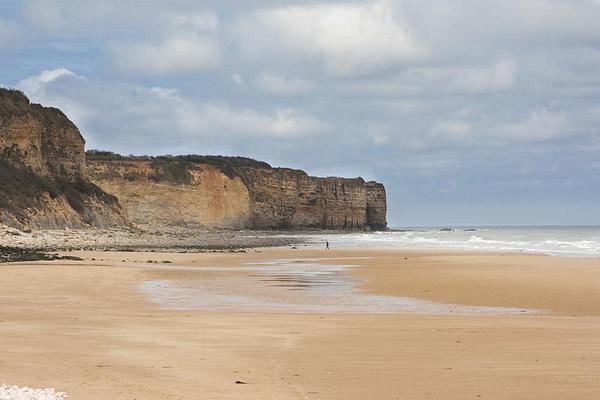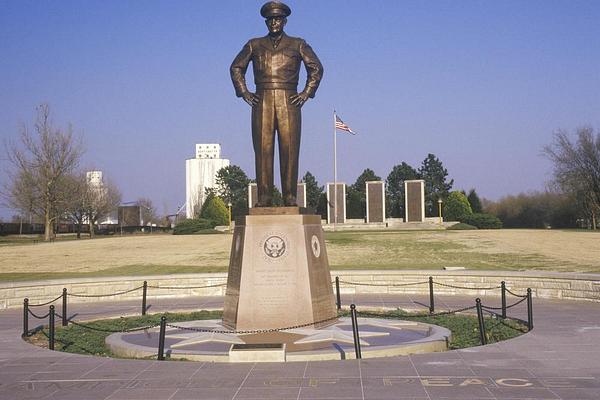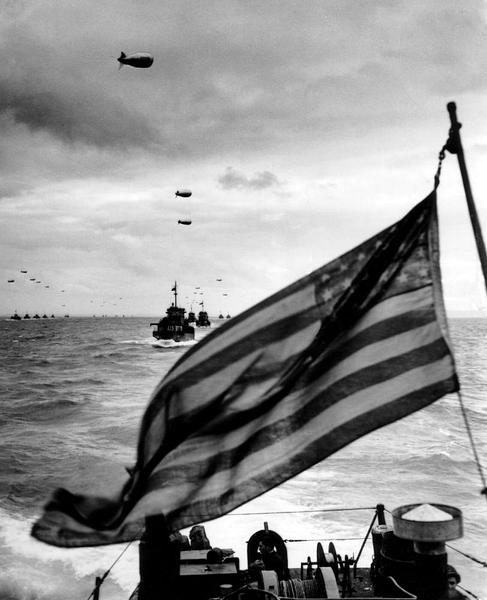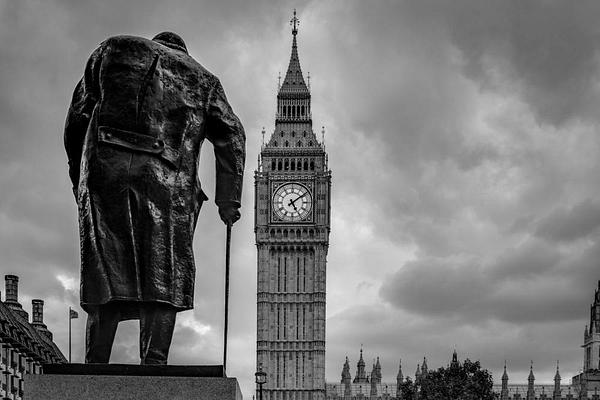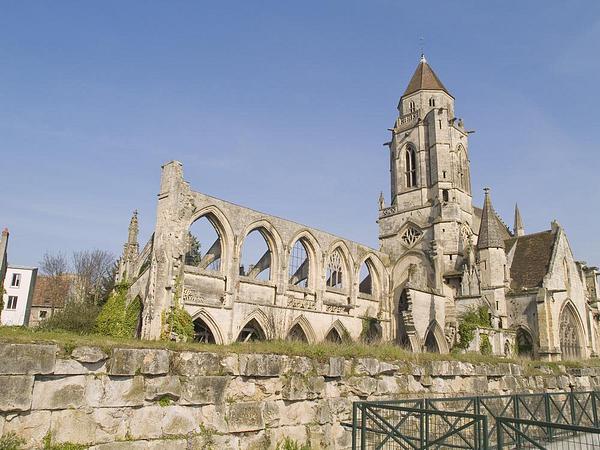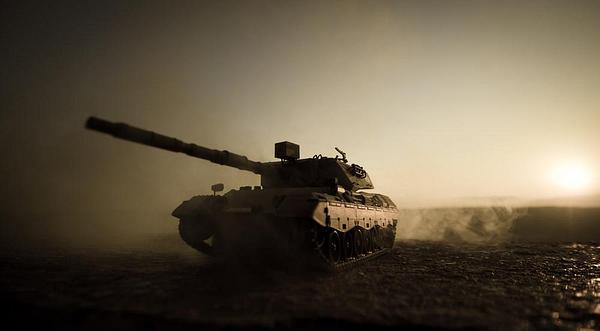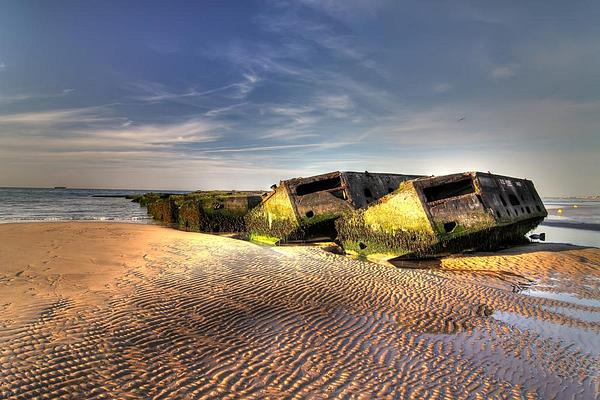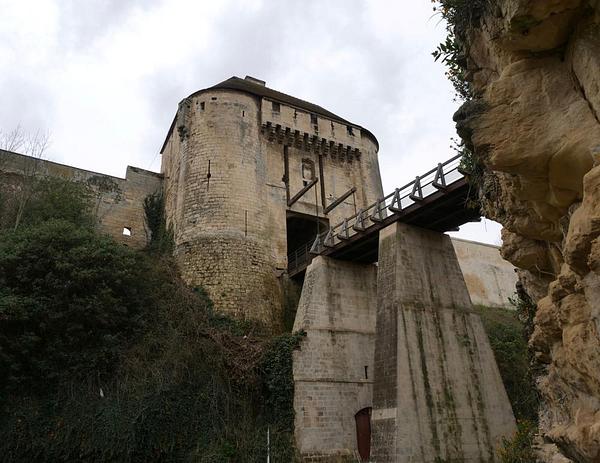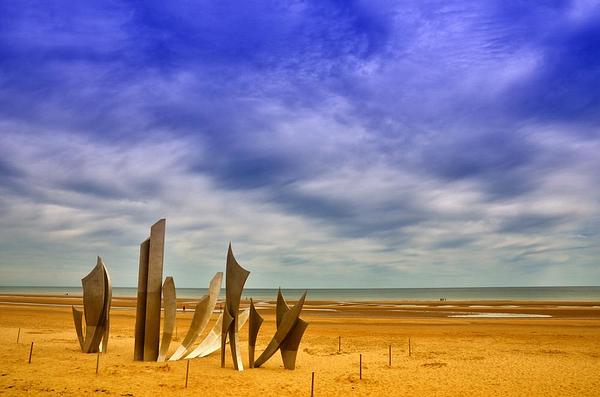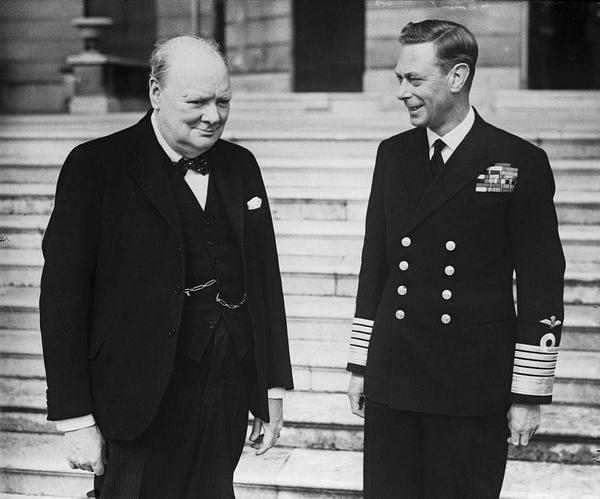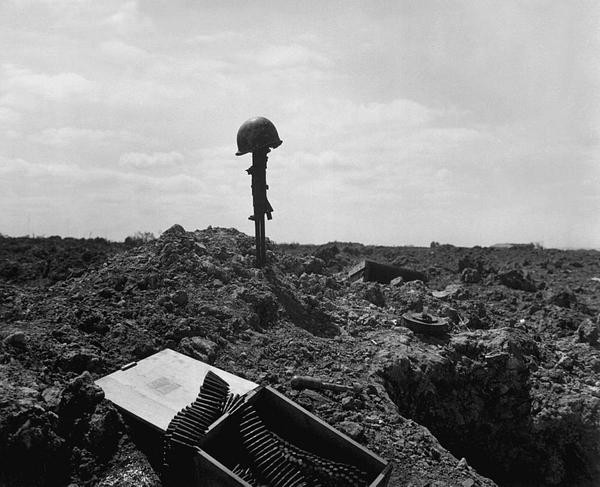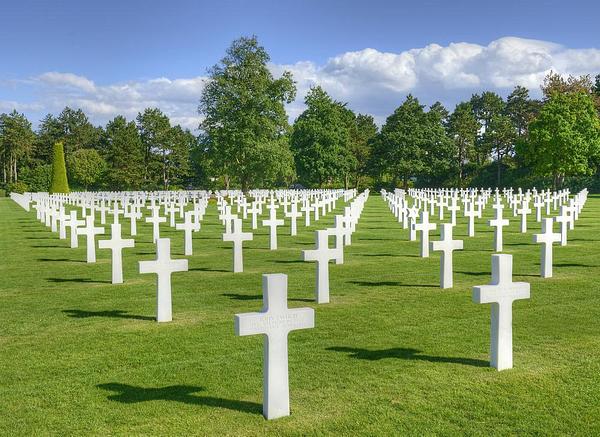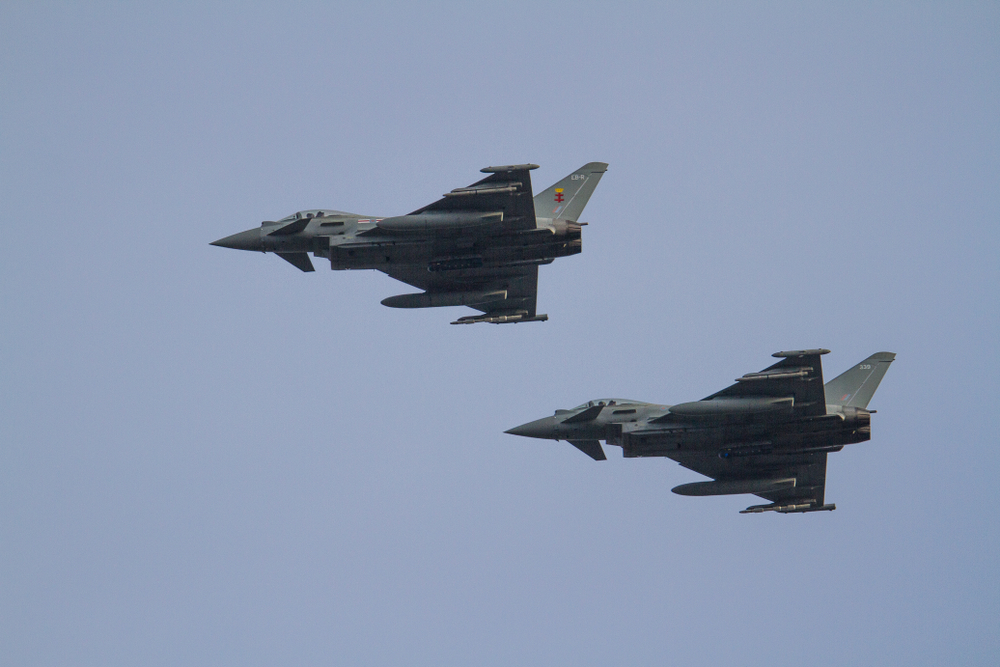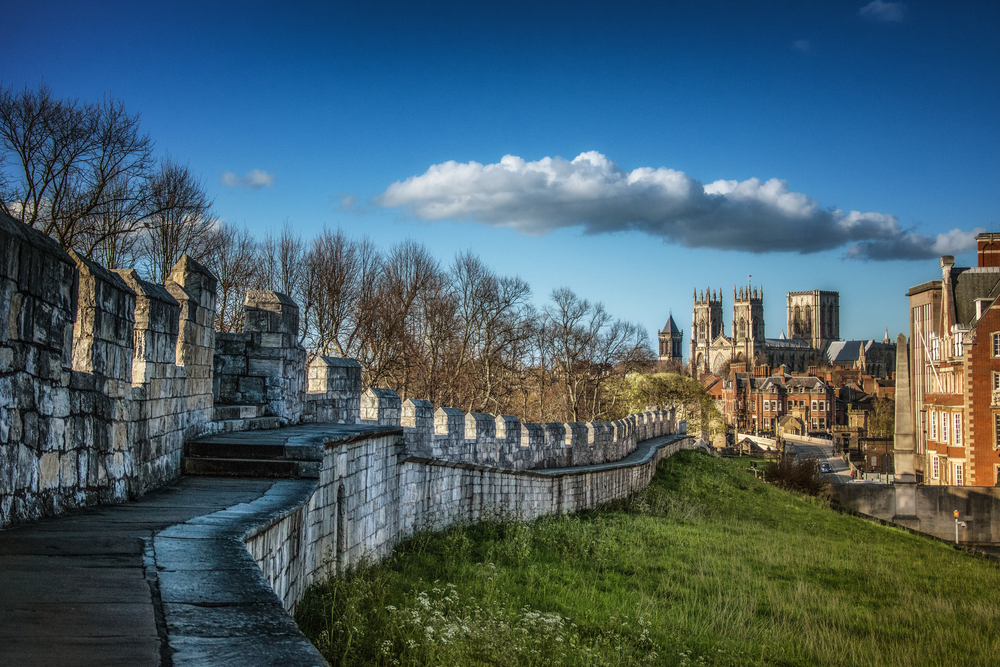.JPG)
For many it will be the final milestone anniversary as veterans gather to bow their heads in an act of remembrance to honour the sacrifice and bravery of those who charged ashore in Normandy into a blizzard of gunfire and shelling.
D-Day was a campaign that ultimately paved the way for the end of the Second World War but one which claimed the lives of thousands of men and left many more bearing the physical and mental scars of war.
Today 75 years on The Yorkshire Post shares the stories of those veterans who remember that fateful day in Normandy to ensure their stories of courage and sacrifice will always be remembered.
Leslie Harry Postill
Leslie Harry Postill has survived more near misses than most.
At 96, a former anti-aircraft gunner for the Royal Navy, he still has flashbacks about the D-Day Landings.
But he’s also survived aerial attacks from Stuka dive bombers, torpedo attacks, being rammed by German submarines, the frozen perils of escorting Russian convoys through the Arctic Circle and he was sunk twice in the English Channel.
Speaking from his home in Whinmoor in Leeds, the great grandfather-of-six, who has one daughter and two grandchildren, still exhibits impressive powers of recall from his time during the war.
To begin with, he says Normandy was not what he expected.
“We were in Italy and bound for southern France but then we were switched to cover the D-Day landings,” reminisces Leslie, who is married to Joyce.
“We got loaded up with troops in England and then set off for France. When we got there, it was just like a summer’s day, there was no action. As we got nearer, we thought something would happen, but nothing did, it was just absolutely quiet.
“We landed 450 soldiers onto the beach, along with 170 electricians, two tanks with chains on and the beachmaster. We were stood for about three-quarters of an hour on the beach and not a thing happened. They told us to pull away and sent us back to England for more troops.”
He goes on: “When we came back, it was all hell let loose. Our job then was to unload, then pick up the wounded and broken down vehicles. We did that about six or seven times, going back and forth between Normandy and England.”
Leslie says his ship would get as close as it could to the beach, all the while attempting to evade enemy gunfire.
He recalls: “Wherever you went, there were bombs and shells falling. You couldn’t be frightened because it was all happening - afterwards, you thought to yourself, ‘How the hell did I do that?’ Our job was to bring the wounded out."
“Our ship had sleeping accommodation for about 600 men, there wasn’t time to wait for the hospital ship and so we loaded them and took them back to England.”
After Normandy, he was immediately deployed to Antwerp to help with another invasion, although he says the fighting there was nowhere near as bad.
Leslie also says that Normandy was not the worst experience he witnessed during the war. “Italy was much worse,” he says. “There, they really were fighting to keep you out.”
Leslie is the son of a foundry worker and a tailoress and grew up in Armley with his two brothers and sisters, who have all now died. He attended Whitehall Road School and left at 14 to work as a tailor. He signed up and joined the Royal Navy at 17-and-a-half and was already at sea when the powers-that-be found out.
“You weren’t meant to enlist until you were 18,” explains Leslie. “They found out I was underage but I was already on a boat. The captain stepped in and said they would take me from when I turned 18.”
He served with the Royal Navy from 1941-46, during which time he worked all over the world, at one point escorting Russian convoys through the Arctic Circle, for which he was awarded one of Russia’s highest military honours, known as the Ushakov Medal.
“When you went on Russian convoys, if it wasn’t ice and snow, it was bombs. Stukas used to come down and when they did they made an awful whistling noise. If you’ve never heard it, you never want to. We used to have to wait until they got into the attack dive before we opened fire, otherwise you had no chance of hitting them.”
Attacks did not just come from the air.
“There were torpedo attacks as well,” says Leslie. “I remember the first time I saw one, I just stood there, transfixed. They would come in so fast. The worst thing was when they sent out a fan of torpedos. We once had our bows blown off but we were never sunk by one. Then there were ‘ramming subs’ as well.”
As if aerial bombardment and submarine attacks weren’t enough, the crew also had sub-zero temperatures to contend with during their arduous convoy journeys, lasting up to 13 weeks, from America to Russia.
“The weather was so unpredictable, it could be bright sunshine one minute and then the next, you were in a snowstorm. We constantly had to chip ice from the guns. We all had to wear special gloves on deck, if you got caught without them, you were in big trouble, because if you touched any metal with your bare skin, it would just stick fast.”
Leslie also recalls being sunk three times, twice in the English Channel.
“The first time it happened, we were in the water for about two hours. We had life belts on and we weren’t frightened because we knew someone would be along to pick us up before long. The second time it happened, we were in the water for about half an hour.”
However, during another sinking, this time off the coast of Africa, he was forced to take drastic action.
“Our boat was close to the beach and we were just pulling away when we got hit. The boat began to sink and it was listing.
“Another ship, HMS Zetland, came to our rescue. The captain pulled alongside us but said that because ours was leaning, he could only do it once.
“We all had to jump from our ship to theirs, it was about three or four feet across. Anyone who fell down between the two ships would have been crushed, luckily we all made it.”
In October 2017, Leslie was awarded the rank of Chevalier in the Order of Légion d’Honneur, one of France’s highest military honours. It was his 10th medal.
After the war, Leslie returned to tailoring, working in a number of businesses, including Lewis’s and Burtons and later at Monk Bridge iron and steel works on Whitehall Road, which is where he met Joyce, marrying her in 1976.
Until just a few years ago, he was an avid, trophy-winning Crown Green bowler and in his younger days he bred budgerigars.
At 96, he is mostly housebound now and is not as active as he used to be.
Commenting on the 75th anniversary of D-Day, he says: “Sometimes I think it should all be forgotten about and then other times, you think about your pals. I lost some good pals in the war.”
D-Day factfile
- The D-Day landings were called "Operation Overlord" by the Allied commanders, who were appointed at the end of 1943 to plan the invasion.
- The force which took part included 5,300 ships and craft, 150,000 men, 1,500 tanks and 12,000 planes.
- British and Commonwealth troops landed at the three beaches of Gold, Juno and Sword.
- American soldiers were given the task of getting ashore at the Utah and Omaha beaches. Omaha saw some of the bloodiest fighting, with US troops cut down by intense German machine gun fire.
- Further inland, Allied airborne troops had been parachuted in before the dawn beach landings began.
- A British glider assault, led by Major John Howard, successfully captured and held Pegasus Bridge until reinforcements arrived from the coast.
- By June 12 1944, more than 320,000 men were ashore with almost 55,000 vehicles and nearly 105,000 tons of stores.
Frank Baugh
It was just starting to get light when Frank Baugh caught sight of the French coast from his position on the bridge of a landing craft ship. From behind his boat, a naval fleet opened up the bombardment.
“They were firing 16 inch shells that were going over our heads. We could feel the shimmer of the air as they went over. And then of course the Germans realised we were there and there was the shimmer the other way.”
His craft was the first to land on the Queen Red sector of Sword Beach as the Allied forces mounted their invasion of Normandy on June 6, 1944.
“We found it empty. We were the first landing craft on that section of that beach and that’s not a good place to be in the front.”
It proved to be true. As the boat moved closer to the shore, it became a target, facing not only the shells but heavy machine gun fire too. As it reached the beach, it was struck with a direct hit. “A shell came in on the Port side, into the troops base, blew up inside, set the ship on fire and blew a fair-sized hole on the waterline on the Starboard side, so we were absolutely scuppered then. We were on the beach and we were stuck...Our lads were starting to get off but the machine guns were really wicked, cutting them down before they even got to the shoreline.”
His boat, a 150ft by 25ft Landing Craft Infantry (Large) 380, was transporting 200 men from the King’s Shropshire Light Infantry, as part of a fleet of ten. The whole operation saw 156,000 Allied troops land by sea or air that day.
“The thing that was noticeable was the number of aircraft that passed over us. We were saying ‘get on’ and ‘great lads’ because we knew that the more of them there were dropping bombs on the coast, the better it would be for us.”
Having bottomed out, the craft had landed in about four feet of water and the troops disembarked down the ramps into crashing waves. From the boat’s bridge, signalman Frank witnessed death and destruction.
“The quicker [they got off], the better, because if they didn’t move they were dead. They didn’t take any urging, but when they got into four foot of water, they were being knocked over and if they weren’t picked up by their pal in front of them or behind, well they would drown.”
Once all the soldiers were off, the plan was for Frank, then 20, and his crewmates to return to Britain, to pick up more.
It took around four hours to repair the ship sufficiently enough to take to the sea again. “All that time, we were in trouble with the German gunners. When the shell came in to the troop space, most of the men had got onto the upper deck ready to leave, but one or two got caught.”
Around 20 were wounded, and seven seriously so. The crew tried to transport them to a bigger ship with more medical facilities on their return to the UK, but the waves were too rough and they were forced to abandon the plan and head to their base at Newhaven as quickly as they could.
It had become the flotilla’s home port at the beginning of May, after five months of training near Inverness in Scotland. Frank had joined the Royal Navy 18 months prior to that in June 1942, training as a signalman at HMS Collingwood near Portsmouth.
He had grown up in Hemsworth and at the outbreak of the Second World War in 1939, was studying under a scholarship at St Michael’s Catholic College in Leeds. His father, a mineworker, had been killed in an explosion at South Kirkby Colliery four years earlier and, seeing his family were struggling financially, Frank dropped out of school without his mother’s knowledge at the age of 16.
He secured a job as a management trainee, above ground, at Hemsworth Colliery, but joined the forces with his call up papers when he turned 18. After his initial Navy training, Frank, now 95 and living in Doncaster, was drafted into Combined Operations, a division working with the army and airforce to prepare for the landings.
Though he knew he would be involved in an invasion, he had no idea of the details or scale and it was only when the craft docked back in Newhaven late on D-Day that he and his comrades were able to pick up a newspaper and find out where they had been.
“It was a big secret and it was kept very well. The beach was chaos, it wasn’t a good place to be, but there was a lot of organisation put into getting all those men, materials, ships and aircraft in one place.”
Frank and his crew went to collect their boat themselves, travelling to Boston, Massachusetts, where it was built. It took them five days to reach New York on Queen Mary - and six weeks to tackle the Atlantic journey back on the landing craft at the end of 1943. Fast-forward six months and on June 4, 1944, the D-Day troops clambered aboard. The crew went to sea that evening, planning to land the following day. Months of preparation had gone into the whole assault, but at the 11th hour, it was postponed due to stormy weather.
“The weather actually worked in our favour,” Frank says. “Even though it was bad weather and it upset most things and we had to cancel landing by a day, it also fooled the Germans, because they didn’t think anybody was daft enough to invade in weather like that.”
Forty-eight hours after the first troops landed, Frank and his team were back on the beaches of Normandy again, their flotilla of ten dropping off 2,000 more men. They made trip after trip for nearly a year and a half, moving up the coast as soldiers moved inland.
For many of the more than 100 journeys, Frank’s craft also had a second role - bringing prisoners of war back to Britain, including shell-shocked Germans who gave themselves up. “We worked hard as a navy team,” he reflects. “We had little sleep because there’s no stopping. You had to keep going to get men over there. We never had enough men.”
Frank, who is planning to take part in 75th D-Day anniversary commemorations in Sheffield, when he returns from paying his respects this week in France, left the navy after the war in 1946 and married a year later.
His late wife, the sister of a girl his cousin was courting during the war, had written to him for months during his time in service. They went on to have two daughters, and Frank re-joined the mining industry, retiring as a director of purchasing with the National Coal Board at the age of 60.
Though Frank has returned to Normandy for the past decade, he didn’t go back for 65 years - he didn’t want to. “On D-Day, I never expected living the next hour, never mind to 95,” he says. “Anybody who says he wasn’t frightened, he wasn’t there. That’s my opinion..."
“The beach was littered with lads who had been killed. It’s an awful feeling. We were young fellas. I was 20 then and you’re seeing death in that nature for the first time and seeing it on that scale, you’re frightened. But you do your job. You have to do it and you don’t want to let your pals down.”
Ken Smith and Ken Cooke
Ken Smith paused on the sand as one of the most daring and audacious military operations the world had ever seen unfolded around him. He had no choice.
In the grip of battle, amidst the noise and destruction of heavy bombing, the infantryman and signaller was under officer orders to dismantle a broken wireless set. In the receiver and in the battery were lodged two machine gun bullets.
“Before I landed, I wasn’t frightened, I wasn’t scared, I was terrified,” Ken recalls. He was 19 and part of the some 156,000 Allied troops that stormed the beaches of Normandy on June 6, 1944 for the D-Day offensive that marked the beginning of the end of the Second World War.
“I was absolutely terrified and shaking quite a bit. But when you get actually on the beach and resign yourself to the fact that you might not get through the day, that tends to disappear.”
Like many of the men, Ken, who grew up in Leeds, had travelled to the French coast by boat.
As he lowered himself down a scrambling net to reach the landing craft that would take him to shore, he watched as soldiers lined up to be blessed in front of a priest’s table.
“They’re not the sort of men you can imagine that would have been in a church for many years. But when you’re facing death as you were, you tend to grasp anything that could help.
“There was this Cockney lad - boastful, small and swaggered about and he used to tell anyone that listened to him how he wasn’t frightened of anybody or anything.
“But just before we landed, I felt a hand on my shoulder - and I thought it was somebody telling me to pull myself together because I was shaking - and it was this little lad.
“He just said in this quiet voice, all the bombasticness was gone, 'I’m scared mate.' So I said 'we’ll look after each other.' Going up the beach where mines had been cleared, or supposedly cleared, he went down."
“I saw him go and you’re not allowed to stop in battle. You have to keep going, so if anybody goes down you hesitate just for a minute and a voice behind you says 'keep going lad.'
“That’s when I got to the top of the beach and the wireless set was no good...To my shame, I never found out what happened to him.”
Ken, who had begun an apprenticeship as a draughtsman in engineering after leaving school, did his basic training in Derby after being conscripted.
He prepared for the D-Day invasion in Scotland and Cornwall and served with the Duke of Cornwall’s Light Infantry.
“You never really made friends,” he says, reflecting on the casualties and the turnover of troops. “They’d have you in a slit trench for two people. You’d be with somebody, you might know his first name and the next day he’s not there.”
Whilst getting out of one such trench on October 20, 1944, Ken was hit by shrapnel as a shell burst nearby and killed a comrade.
He spent time in Brussels General Hospital before being flown home in a Dakota in November. He did five years of National Service with the Forces, including in Palestine.
“When I came out the army, I was demobbed in York. I walked to the station and I called into the first church that I came across and I took an oath at the altar that I would not handle another weapon again and I’ve kept to that.
“I’ve not even bought my family toy guns. I won’t handle anything because over the five years, I have been responsible for the killing and wounding of quite a few.”
Now aged 94 and living in York with wife Gloria, Ken, who had a career in the insurance industry, still gets flashbacks.
He survived but an estimated 10,000 Allied troops were either killed or injured on that harrowing day and tens of thousands more joined their ranks in the bitter struggle to loosen the grip of Nazi tyranny across Europe.
“You’ve seen such dreadful things,” Ken says. “The true heroes are still out there. That’s our thoughts completely.”
It is a sentiment shared by fellow D-Day veteran Ken Cooke, then an infantryman with the Green Howards.
He had grown up in a mining village in Nottingham but, when his call up papers arrived at the end of 1943, was living in York and working at renowned confectionary company Rowntree’s, where he returned, and met his late wife Joan, after the conflict.
Ken’s ship bound for Normandy set sail from Southampton on the night of June 5.
An early wake up call came at 3.30am on D-Day morning when he and his comrades went to the mess deck for a breakfast of scotch porridge, and a corned beef sandwich, washed down with a mug of tea and a tot of rum for courage.
Half an hour later, they were told to get their gear together and make their way down the scramble nets into the landing craft.
“We set off towards the beach which we could hardly see because of the smoke.
“As we got closer, one or two of the chaps were seasick - I wasn’t. I seemed to be okay and I was leaning over the side of the landing craft watching all the fireworks and all the noise and smoke.
“It was terrible, noise, smoke, explosions and the way we were sailing towards the beaches, we were sailing into all that.
“To me as an 18-year-old it was like a boy scout adventure,” he adds. “It was all new - I’d never been on a ship before, never been on a beach before, never seen any big guns firing or whatever. It was all a big adventure.”
The ramp went down and the men jumped off into the sea. “I stepped into about six inches of water and my main feeling was oh my socks are all wet through. I weren’t bothered about the shells and bullets going.”
The men scrambled across the beach as quickly as they could, making way for more troops, tanks and masses of supplies following behind them. The danger didn’t sink in until the following morning.
“The day after D-Day, you realised some of your mates were missing. You wanted to know where they were and someone would say - oh they got killed yesterday."
“They got blown up and different things. That’s when it hit you that it was very, very serious. The bullets were real, the shells were real.”
Ken, now 93, was badly wounded by shrapnel from an overhead shell on July 4. He was put on a ship back to Britain and spent five months convalescing in hospital.
On his recovery, he was sent to rejoin the British troops across the channel, this time with the Highland Light Infantry, with whom he took part in battle just outside the German town of Bremen.
There, in 1945, his war was finally over. He was sent back home with shell shock, known today as Post Traumatic Stress Disorder.
“These experiences what we’ve had and what other veterans have had, you don’t talk about them, because they’re too terrible to talk about.
“You’ve seen things you shouldn’t have seen...There’s some who have never talked about it.
“Youngsters particularly, we want to get the story to them to make them understand what D-Day and the war was all about. We hope it will never happen again for them and their children.”
Keeping the memory of D-day alive in York
It was 2015 and there were rumblings of concern among the remaining members of York Normandy Veterans. The group, once sixty-strong had dwindled to just five and those left were worried that their memories of D-Day would be lost; their experiences from a critical moment in British history that saw so many young men lose their lives, could well die with them.
A chance conversation between coordinator Nick Beilby and Helena Fox of North Yorkshire theatre company Everwitch inspired a project which aimed to make sure that was not the case. “They were particularly concerned that as a nation we may come to forget their young comrades who never returned from France,” Helena recalls.
“Having given talks in schools and to the public for many years, they were actively looking for a way to keep their memories alive for future generations.”
Helena’s vision was to document and share their verbatim experiences through a play and she set about interviewing the veterans. Ken Smith and Ken Cooke recounted their stories, alongside 94-year-old Bert Barritt, who landed on Sword Beach.
George Meredith, who served in the Royal Ordnance Corps, and Dennis Haydock, who was a member of the Coldstream Guards, also shared their memories, though both men have passed away since - and two more have joined the veterans group in recent years. “I could really hear and see everything they were describing,” says the play's director Helena. “I was transported from their living rooms onto the beaches and battlefields..."
“It was shocking to think how young they were and how little training they had to prepare for D-Day and the horrors they would witness. What became apparent was that this wasn’t just going to be a play about the events of D-Day but about the hidden world of Post Traumatic Stress Disorder and the lifelong impact of this condition.”
It is why the play was named, Bomb Happy - a term used during the Second World War for the shell shock that soldiers experienced. The production toured around Yorkshire in 2017, but is being staged again to mark the 75th anniversary of D-Day as part of commemorations commissioned by York Civic Trust, and funded by the Armed Forces Covenant Fund and Two Ridings Community Fund.
“The intangible experiences of people like Ken and Ken are what make a city and their stories are really important,” says David Fraser, the civic trust’s chief executive. “You can see the profound effect that a few months in 1944 had on Ken and Ken, but not just them, their families they left behind. And it wasn’t just the 1940s - 75 years later, they are still feeling the effects.”
Five performances of the show will take place at York Army Museum from June 14 to 16, with a chance to meet the veterans afterwards. It will then tour to two secondary schools and two cadet bases in the region, and one performance will be live screened for schools across the country. The play's text is also being released by Methuen Publishers and copies will be going to ten York secondary schools.
Danny Mellor, 26, who plays Ken Cooke, says: “I don’t think I would have been able to go on a landing craft to the complete unknown with heavy artillery fire, whilst friends around you, and people you don’t even know - are getting shot and killed. We will never truly understand what it was like but the play gives a real insight.”
“There’s a living history to it,” adds Joseph Sample, 24, who plays Ken Smith. “There’s a whole person’s life behind the text.”
The commemorations also include a York Army Museum D-Day 75 exhibition, running until September 7, a talk on uncovering the veterans’ stories at York Explore on Thursday and an archive showcase of Second World War stories in the same venue on June 13.
.JPG)
.JPG)
.JPG)
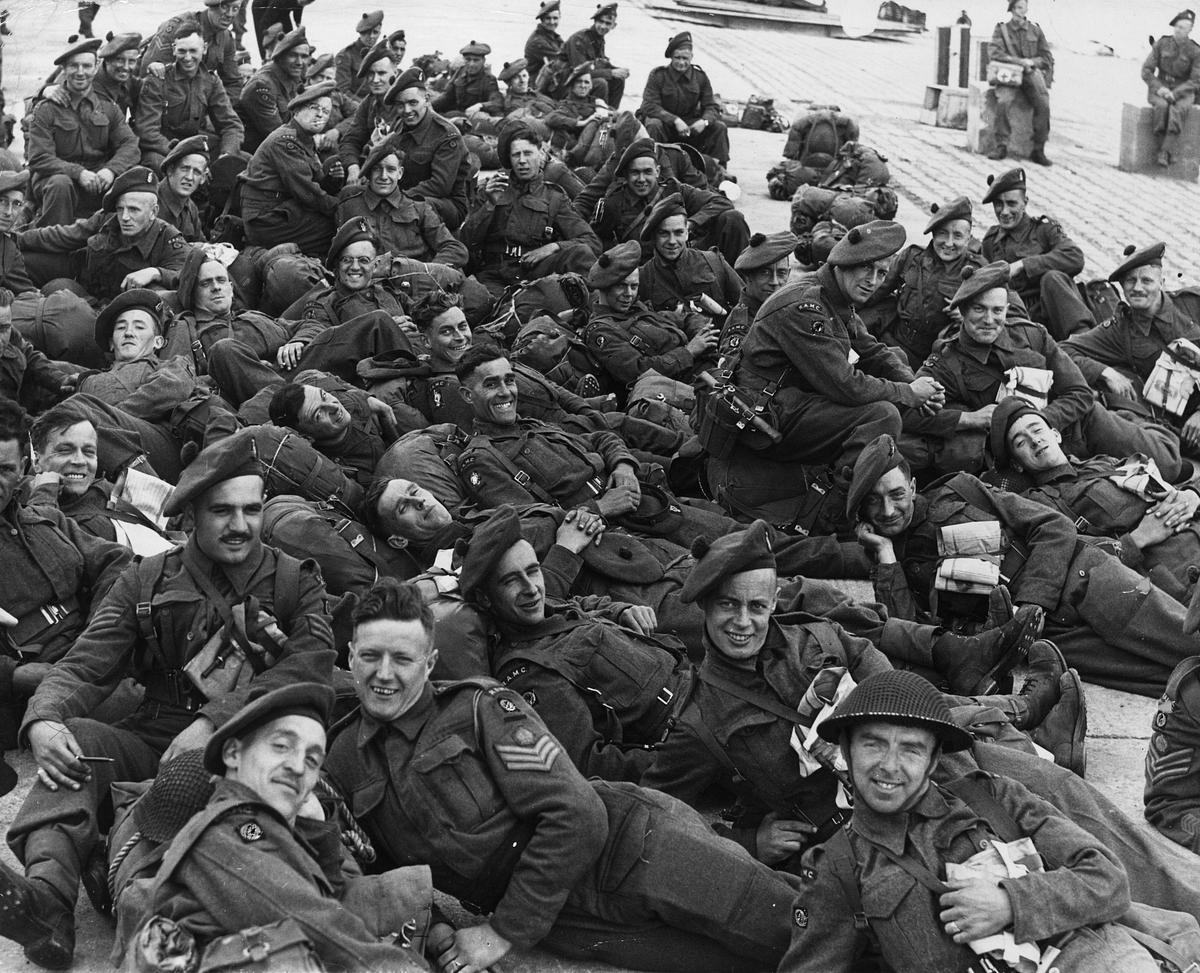
.JPG)
.JPG)
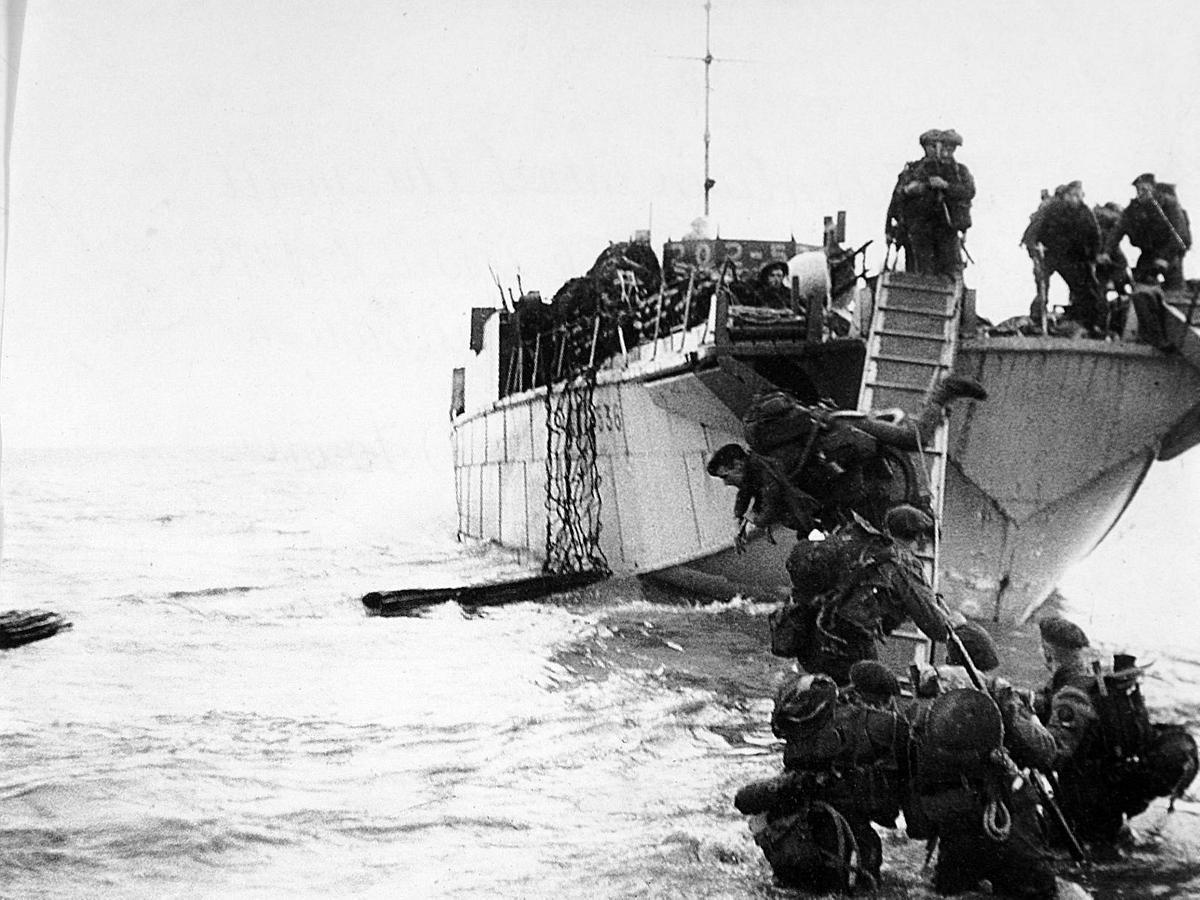
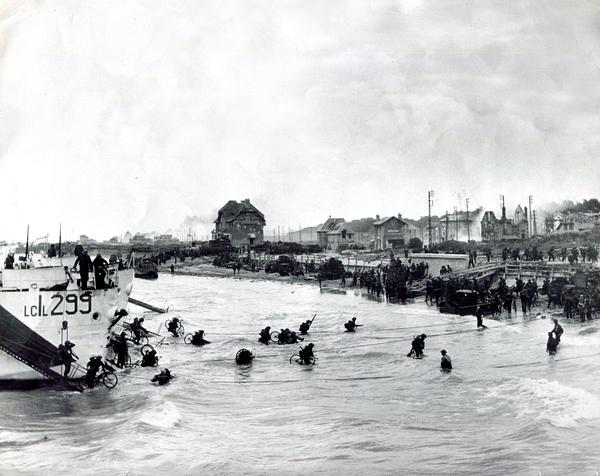
.JPG)
.JPG)
